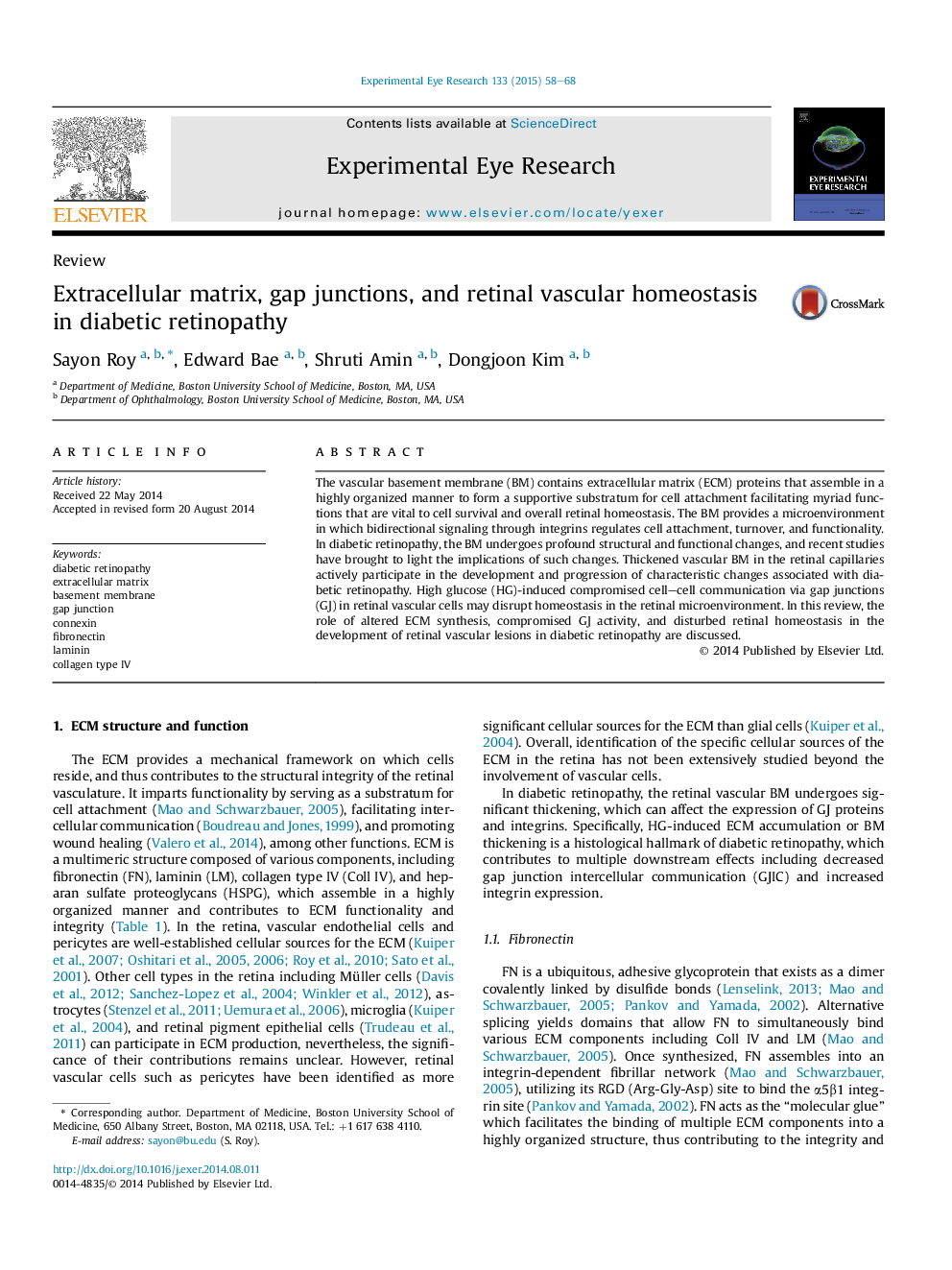| کد مقاله | کد نشریه | سال انتشار | مقاله انگلیسی | نسخه تمام متن |
|---|---|---|---|---|
| 6196668 | 1602589 | 2015 | 11 صفحه PDF | دانلود رایگان |
- Effects of vascular basement membrane changes in diabetic retinopathy.
- Overexpression of ECM components contributes to retinal vascular BM thickening in DR.
- BM remodeling plays a critical role in angiogenesis and ultimately PDR.
- ECM changes promote disturbed retinal vascular homeostasis in DR.
- Altered cell-cell communication triggers apoptosis induces retinal vascular cell loss in DR.
The vascular basement membrane (BM) contains extracellular matrix (ECM) proteins that assemble in a highly organized manner to form a supportive substratum for cell attachment facilitating myriad functions that are vital to cell survival and overall retinal homeostasis. The BM provides a microenvironment in which bidirectional signaling through integrins regulates cell attachment, turnover, and functionality. In diabetic retinopathy, the BM undergoes profound structural and functional changes, and recent studies have brought to light the implications of such changes. Thickened vascular BM in the retinal capillaries actively participate in the development and progression of characteristic changes associated with diabetic retinopathy. High glucose (HG)-induced compromised cell-cell communication via gap junctions (GJ) in retinal vascular cells may disrupt homeostasis in the retinal microenvironment. In this review, the role of altered ECM synthesis, compromised GJ activity, and disturbed retinal homeostasis in the development of retinal vascular lesions in diabetic retinopathy are discussed.
Journal: Experimental Eye Research - Volume 133, April 2015, Pages 58-68
